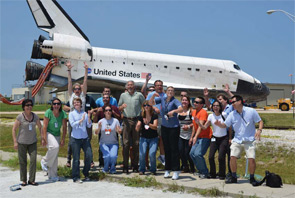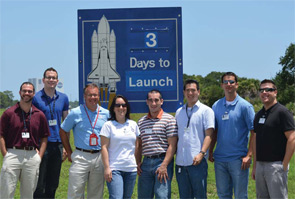Bone researchers are cautiously optimistic that is the case, as space travel can produce insights and medical advancements that otherwise might not happen, particularly important for the astronauts subjected to the biological rigors space inflicts on the human skeletal system.
“If we want to continue space exploration, bone loss and muscle atrophy are going to be a huge problem,” Dr. Donahue says. “So these types of studies will be absolutely critical.”
The value of past shuttle flights—and the medical experiments that piggybacked along for so many of them—extends even further than that, adds Dr. Bateman.
“It would be pretty painful to watch NASA or America not be able to fly experiments like this in the future,” he says. “You always want to move forward in science … and this would be a pretty big step backwards if we can’t fly animals to space again.”
Richard Quinn is a freelance writer based in New Jersey.
From Idea to Approval


Researchers in bone density have long hitched rides on NASA shuttle flights to the International Space Station to conduct medical experiments in space. The fruits of that labor may take years to realize, but scientists say the ends are well worth the means, even if the process can span a decade or more. Take the example of denosumab, an Amgen therapeutic approved by the FDA for multiple uses in treating bone diseases last year—nine years after a space flight where the drug’s research began.
December 2001: The space shuttle Endeavour carries 24 female mice, some of which were given osteoprotegrin (OPG) to test the protein’s efficacy in reversing decreases in bone formation.
June 2010: The FDA approves the first use of denosumab, a RANK Ligand inhibitor developed by BioServe Space Technologies and Amgen Inc., using the research done aboard Endeavour. The FDA clears the injectable drug, known as Prolia, for postmenopausal women at risk of bone fractures because of osteoporosis and other factors.
November 2010: The FDA further clears the use of denosumab, via subcutaneous injections, for the prevention of skeletal-related events in patients with bone metastases from solid tumors.
